This episode digs deep into the science of how life is thought to have
first started here on Earth, and how scientists are further refining their
theories through ongoing studies, experiments, and research. Then the
astrobiologists take over to extrapolate how life may be originating
on other planets and moons near and far, in ways similar to life on Earth,
or in ways that are very different.
Many astrobiologists at NASA Ames Research Center also look at
simple life forms that thrive in extreme environments today, to help them
understand if life can exist in the extreme environments known to exist
in other parts of our own solar system. Locations that interest these
astrobiologists include Mars, Jupiter's moon Europa, and Saturn's moon Titan.
The importance of oxygen as an indicator that biological processes
may be taking place is also discussed, which leads to the search for
the light wavelengths produced by oxygen from newly discovered exoplanets.
Finally, the search for intelligent, technologically competent life
brings in members of the SETI Institute, and their obsession with radio.
from the disc sleeve:
Astrobiology:
Travel with a visionary new science on a search for life in space.
Combining the disciplines of astronomy, biology, and geology,
a diverse group of scientists join forces to define life on Earth,
and explore what kinds of life may exist on other planets.
Chapter List:
- Introduction
- Origins of Life on Earth
- Life on Mars
- Liquid Water
- Planets with Oxygen
- Intelligent Life
|
Participants include:
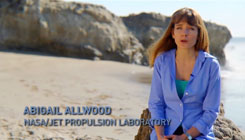 |
Abigail Allwood
NASA / Jet Propulsion Laboratory
● searches the ancient rocks in Australia
for the footprints of very early microbial life on Earth.
|
 |
Jennifer Heldmann
NASA Ames Research Center
● studies algae in snowpacks on Earth
to predict if life could exist in similar conditions on Mars
|
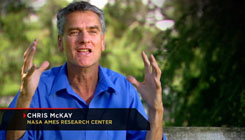 |
Chris McKay
Astrobiologist,
NASA Ames Research Center
● spent over 25 years decoding the origin of life on Earth
in order to find it elsewhere.
|
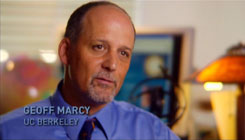 |
Geoff Marcy
Astronomer, Exoplanet Locator,
University of California, Berkeley
● As of the first 300 exoplanets discovered by 2009,
he and colleague Paul Butler had been credited with
finding more extra-solar planets than anyone else.
|
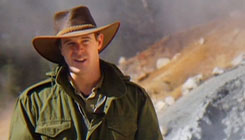 |
Dr. Adrian Brown
Astrobiologist,
SETI Institute
● Investigates hydro-thermal hotsprings on Earth
to better understand similar geology on Mars
where microbes may feast and life may originate.
|
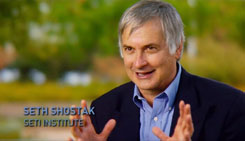 |
Seth Shostak
Senior Astronomer, SETI Institute
Regular Radio/Podcast Host
|
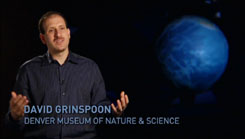 |
Dr. David Grinspoon
Astrobiologist,
Denver Museum of Nature & Science
|
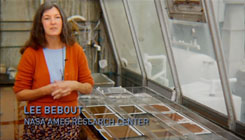 |
Lee Bebout
Astrochemist,
NASA Ames Research Center
● re-cultivates the oldest known oxygen bearing ecosystems
to learn if they could also evolve in conditions on other planets and moons.
|
|


















